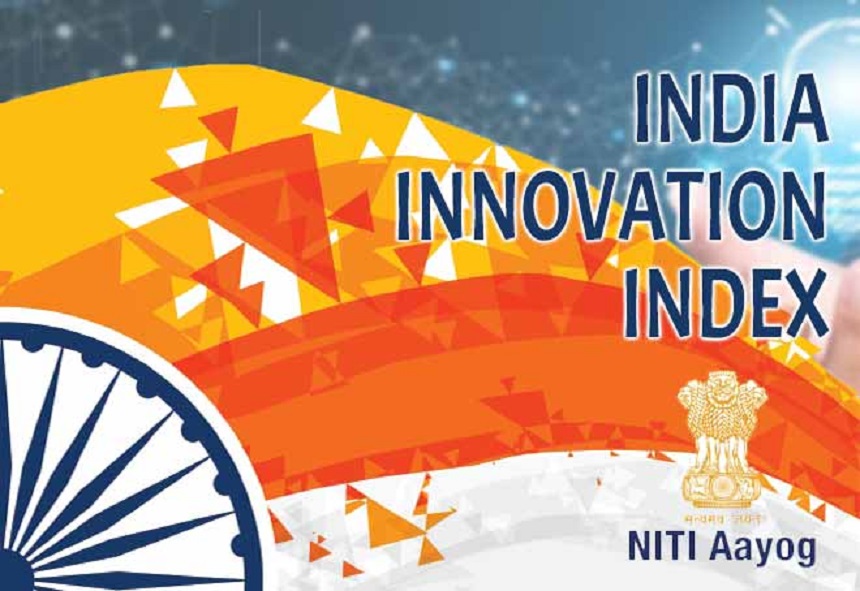
Srinagar- Jammu & Kashmir has registered a noted improvement in the implementation of innovative projects in the last two years.
It was revealed by a latest report by NITI Aayog—Government of India’s apex public policy think-tank—and the Institute for competitiveness.
As per the report, J&K has achieved 12.83 score in the India Innovation Index (III). Out of the nine UTs, J&K ranks 6 in the “UT and City states” category of III, the report adds. While Chandigarh is the best performer with a score of 27.88, J&K’s overall indicators have substantially improved.
Karnataka has retained the top spot in the ‘Major States’ category, followed by Telangana and Haryana.
Pertinently, this is the third edition of the report which presents an evaluation of the innovation readiness of states and UTs and highlights potential challenges that deter the government, businesses and individuals from fully realizing their potential.
The number of indicators has also increased from 36 in III-2020, to 66 in III-2021.
“Innovation is critical in promoting the country’s resilience and self-reliance,” said Neeraj Sinha, NITI Aayog senior adviser. “The index points to the decentralization of innovation across all Indian states.”
As per III-2019 report, J&K’s overall score was 11.07, which saw a considerable increase in 2020 and 2021.
In 2019, J&K’s score in the Enabler category was 16.45 and in 2020, the score increased to 26.83.
As per Niti Aayog, J&K’s score in Enabler category was 17.35 in 2021.
The data also suggests that in 2019, in the performance category, J&K’s score was 5.68 and in 2020, the score increased to 10.41. In 2021, the score was recorded at 8.30.
The latest report further added that J&K’s ‘Distance to Frontier’ (DTF) score has improved by 8.84 in 2021.
“J&K alongwith Pondicherry and Lakshadweep could not push the bar upwards since their performance increased marginally over the previous year and was largely restricted to the human capital pillar,” the report observed.
“Although these UTs have their own start-up and innovation polices like Aspiring Pondicherry-Innovation & Start-up Policy 2019, J&K Start-up Policy 2018, these UTs need to pedal faster to match the growth of other UTs and not let their climatic or geographical factors hamper their growth.”
J&K’s efficiency ratio, the report notes, was recorded to be 0.478 and GSDP per capita (2019-20) was Rs 85219.
Further, in 2021, J&K’s Human Capital was 22.70, Investment 5.7, Knowledge Workers 5.82, Business Environment 24.21, Safety and Legal Environment 28.28, Knowledge Diffusion 4.66 and Knowledge Output 11.94.
“The index also draws some international parallels, which will add to India’s learning and how we can be on a par with our counterparts,” Dr. Amit Kapoor, Chairman Institute for Competitiveness said.
Pertinently, in school education category, J&K’s total Percentage of school functional computer facility is 23.68, NAS scores 31.60, Expenditure on school education as a % of GSDP 6.92, NER in school education 74.20, Accolades in STEM Activities/ 1000 Students 10.36, Pupil-Teacher ratio: Primary & Secondary 12, Percentage of schools having ATL labs 0.16 and Secondary school level completion rate 90.
However, to conclude, the report asserted that the scores and rankings are not directly comparable from one year to another.
“Several factors affect the scores each year. A missing value for one state affects the index score of other states/UTs. It’s affected by missing values, reference year, normalization factor and consistent data collection,” reads the report.
In this backdrop, distance to frontier becomes a useful tool to assess improvement in states over the next iterations of the report, it added.
Follow this link to join our WhatsApp group: Join Now
Be Part of Quality Journalism |
Quality journalism takes a lot of time, money and hard work to produce and despite all the hardships we still do it. Our reporters and editors are working overtime in Kashmir and beyond to cover what you care about, break big stories, and expose injustices that can change lives. Today more people are reading Kashmir Observer than ever, but only a handful are paying while advertising revenues are falling fast. |
| ACT NOW |
| MONTHLY | Rs 100 | |
| YEARLY | Rs 1000 | |
| LIFETIME | Rs 10000 | |













